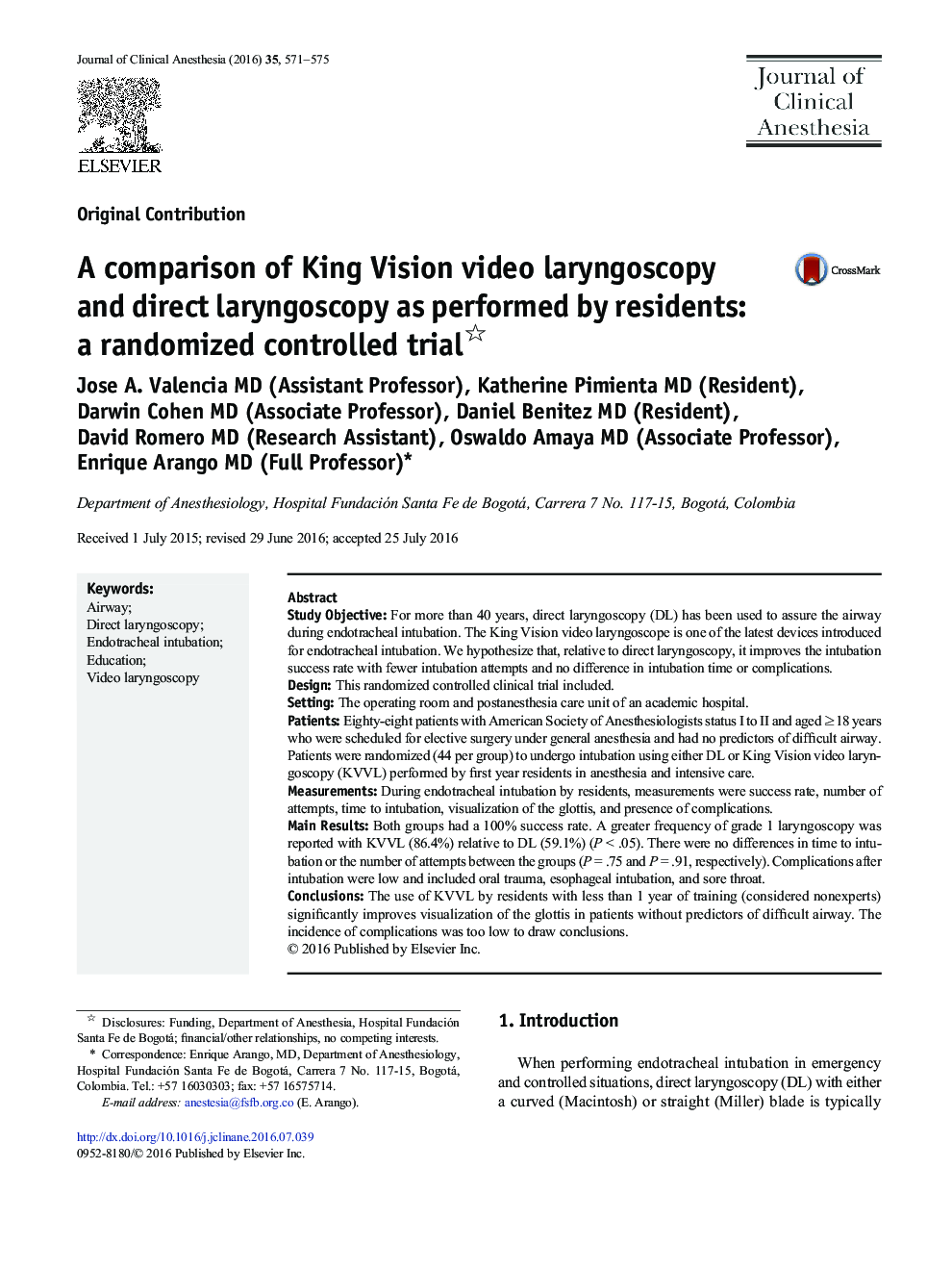| Article ID | Journal | Published Year | Pages | File Type |
|---|---|---|---|---|
| 5884361 | Journal of Clinical Anesthesia | 2016 | 5 Pages |
â¢We compared video laryngoscopy with direct laryngoscopy in 88 patients.â¢Intubation was performed by first-year residents in anesthesia and intensive care.â¢We found a better visualization of the glottis with video laryngoscopy.â¢No differences found in intubation attempts and time to intubation between groups.â¢A success rate of 100% for both groups was seen.
Study ObjectiveFor more than 40 years, direct laryngoscopy (DL) has been used to assure the airway during endotracheal intubation. The King Vision video laryngoscope is one of the latest devices introduced for endotracheal intubation. We hypothesize that, relative to direct laryngoscopy, it improves the intubation success rate with fewer intubation attempts and no difference in intubation time or complications.DesignThis randomized controlled clinical trial included.SettingThe operating room and postanesthesia care unit of an academic hospital.PatientsEighty-eight patients with American Society of Anesthesiologists status I to II and aged â¥18 years who were scheduled for elective surgery under general anesthesia and had no predictors of difficult airway. Patients were randomized (44 per group) to undergo intubation using either DL or King Vision video laryngoscopy (KVVL) performed by first year residents in anesthesia and intensive care.MeasurementsDuring endotracheal intubation by residents, measurements were success rate, number of attempts, time to intubation, visualization of the glottis, and presence of complications.Main ResultsBoth groups had a 100% success rate. A greater frequency of grade 1 laryngoscopy was reported with KVVL (86.4%) relative to DL (59.1%) (P < .05). There were no differences in time to intubation or the number of attempts between the groups (P = .75 and P = .91, respectively). Complications after intubation were low and included oral trauma, esophageal intubation, and sore throat.ConclusionsThe use of KVVL by residents with less than 1 year of training (considered nonexperts) significantly improves visualization of the glottis in patients without predictors of difficult airway. The incidence of complications was too low to draw conclusions.
